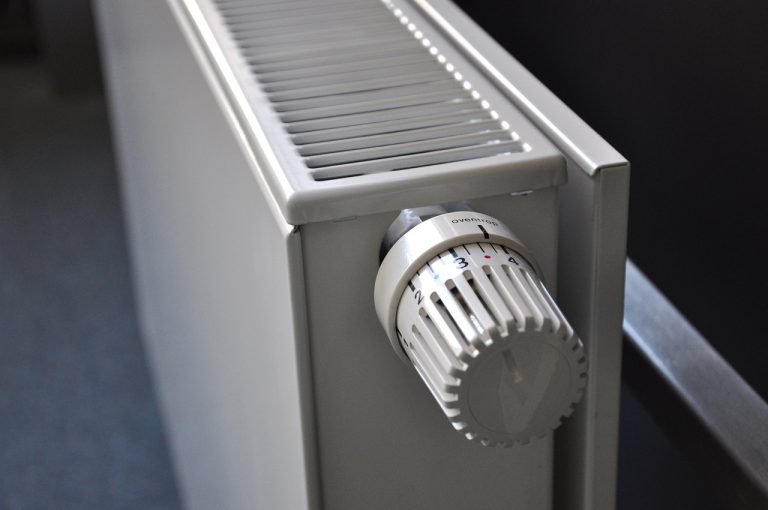Over time, air can get trapped in your central heating system causing cold spots in radiators and making your heating less efficient.
Bleeding your radiators is a simple job that can help your home warm up properly and even lower your energy bills.
While efficiency is great, it’s lowering bills that we’re all interested in, so here’s how to do it safely and effectively.
How to tell if your radiators need bleeding
If you’re reading this, you probably already suspect they do, but here are the signs your radiators need a bleed:
- The top of the radiator feels cooler than the bottom
- Radiators take longer than usual to heat up
- You hear gurgling or bubbling noises from the radiator
- The heating system isn’t warming your home as efficiently
- Your boiler pressure is consistently lower than normal
It doesn’t matter whether you’re using a gas boiler or air source heat pump, the principles are the same.
What you’ll need
- A radiator bleed key (available at DIY or hardware stores)
- A cloth or small towel
- A container or cup to catch any drips
- Protective gloves (optional)
Step 1: Find radiators that need bleeding
Go around your home and feel the radiators while the heating is on.
If the top part is colder than the bottom, there’s air trapped inside, and it needs bleeding.
If you find one radiator that needs bleeding, others will probably need it too.
Turn the heating off if you find any that need bleeding. Allow the system to cool a little before you proceed.
Don’t bleed while the system is on as the system will be under pressure and will probably be hot!
Step 2: Locate the bleed valve
Start with the radiator furthest away from your boiler.
Look for a small square or slotted screw near the top corner of the radiator. This is the bleed valve.
Insert your bleed key into it.
Step 3: Open the bleed valve
Turn the key slowly anticlockwise (about a quarter turn). You should hear a hissing sound as air escapes.
Hold a cloth under the valve to catch any drips.
Step 4: Close the valve when water appears
Once water starts trickling out instead of air, turn the key clockwise to close the valve.
Don’t over-tighten it as that can damage the valve.
Step 5: Check your boiler pressure
Bleeding radiators can lower your system’s water pressure so it’s good to check before switching the system back on.
Check the pressure gauge on your boiler (usually on the front panel).
If it’s below 1 bar, you might need to top up the system using the filling loop. Check your boiler’s instructions if you need to.
Step 6: Turn the heating back on and test
Switch your heating back on and check that all radiators are warming up evenly.
If you still have cold spots, repeat the process until all radiators are fully warm.
Extra tips
- Start with the radiators furthest away from your boiler.
- If you find yourself bleeding radiators often, there might be a bigger issue, like a leak or pump problem.
- An annual boiler service can help keep your heating system running smoothly.
By following these simple steps, you’ll make sure your home stays warm and your heating system runs efficiently—without wasting money on extra energy costs.

